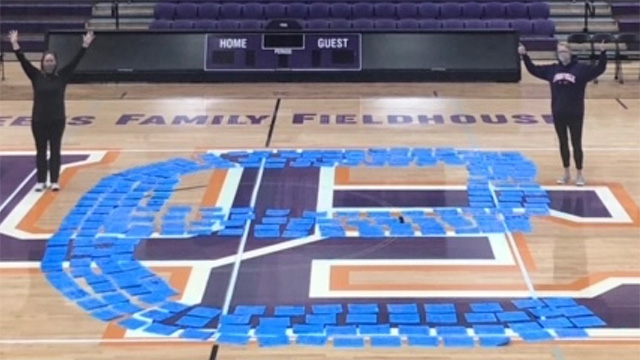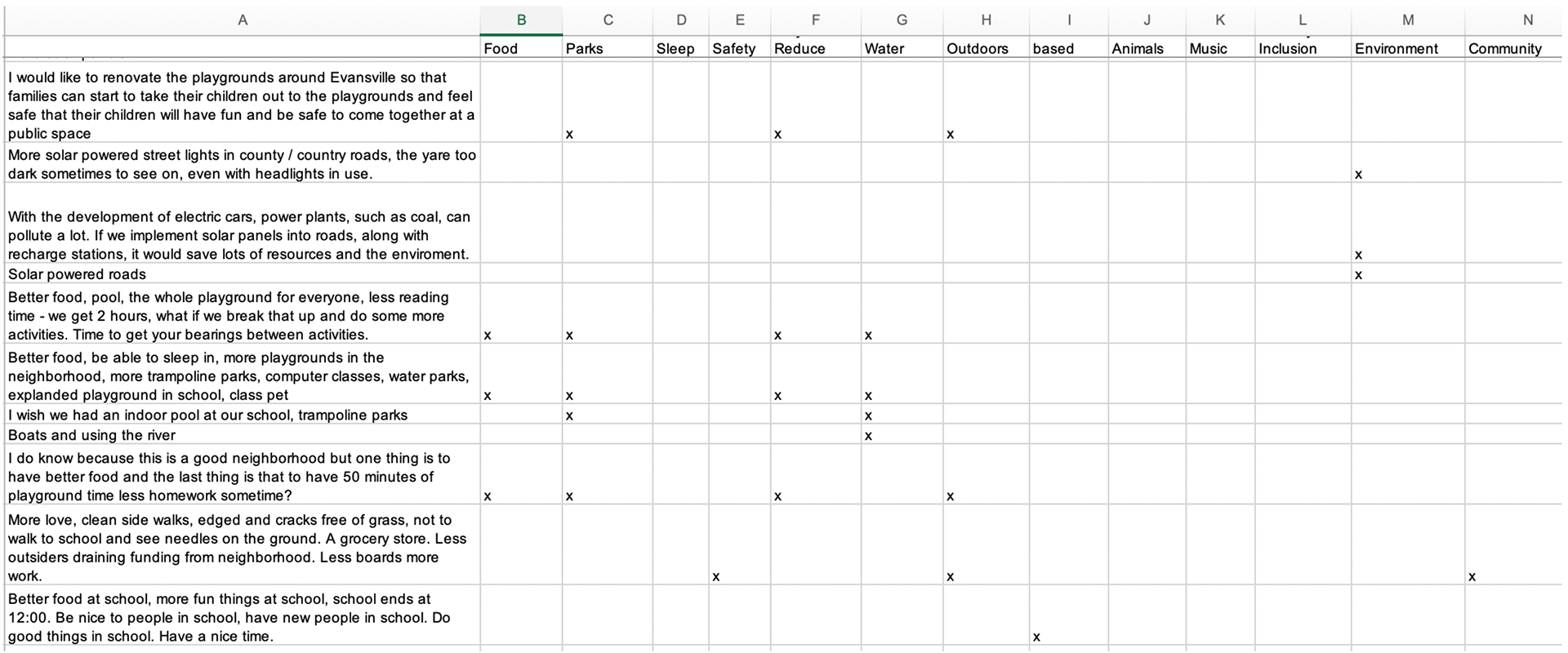Evansville Promise Neighborhood - Our Journey
What have our efforts looked like to date?
Evansville has applied for Promise Neighborhoods four times, including in 2021, the first year in which UE was a partner. Evansville’s selection as a Promise Zone was seen as a necessary precursor to eventually receiving the Promise Neighborhoods grant. In 2021, Dream Center Evansville, EVSC, and UE worked together to build a structure that would replicate Dream Center Evansville’s model in five new neighborhoods. While the application was the highest scoring application to date, it fell short of the mark to receive funding. For the 2022 effort, our core team was expanded to be more inclusive, and our target area became more focused. The EVSC data team, working with Diehl Consulting Group (DCG), did an incredible job compiling the data necessary to focus this attempt on the six EVSC schools with the greatest need and related census tracts. A data-sharing agreement for the application process was established with EVSC and necessary organizations to provide access to more accurate data, a significant advancement from past applications. The University of Evansville, as lead applicant, submitted the 2022 grant application to the DOE for an Evansville Promise Neighborhood on October 7, 2022, with a total request of $30,000,000 over five years. This grant requires a 1 to 1 match, and partner agencies accounted for a match totaling $32,497,295.55. This figure comes from the cost invested in providing wrap-around care services to the neighborhoods designated. On March 28, we received notification that our community had received the award. One of only 3 in the nation for 2023.
Who was involved in 2022 Application Process?
University of Evansville was the lead applicant and worked closely with EVSC to lead the project, with a dedicated Core Team representative of the Major Partners.
Core Team Members- Sylvia DeVault, Corporate and Foundation Relations Officer
- Jeremy Evans, Executive Director, Dream Center Evansville
- Erin Lewis, Executive Director UE’s Center for Innovation and Change (CIC)
- Silas Matchem, Director of Outreach & Community Development, Evansville Promise Zone
- Kim McWilliams, Chief Officer Center for Family, School, and Community Partnerships, EVSC
- Derek McKillop, Director of Community Learning Centers, EVSC
- Tyler Stock, Executive Director of Talent EVV, EREP
- Kelsey Wright, Director of School Support, EVSC
DCG, widely respected program evaluation experts, worked closely with EVSC officials to analyze key neighborhood and school-specific data to inform the Evansville Promise Neighborhood area and six schools. In the grant, DCG is contracted with UE to further develop and implement the evaluation plan in partnership with the core team, track project-specific and required outcomes across the pipeline, coordinate data sharing, and lead a continuous improvement team. Leadership Everyone (LE) and UE’s CIC conducted neighborhood visioning and design thinking sessions to direct the application’s interventions, and LE will be a contractor with UE to guide the EPN approach. Dr. Tad Dickel of the T.A. Dickel Group, LLC, served as project manager - facilitating the process, overall budget development with partners, and coordinating Core Team and partner meetings in preparation for the grant. Amy Bolek of Bolek Grant Writing and Consulting Services, LLC wrote the grant application. UE, as lead applicant, will house the staff leading the Promise Neighborhood at the CIC.
How were neighborhood boundaries and schools identified?
To finalize the EPN geographic boundary and identify focus schools, a series of Core Team meetings were held to determine how best to gain a more accurate picture of student and family needs. Several important considerations guided this determination: (a) Based on feedback from the prior application and to ensure competitiveness, the Core Team understood it was important to narrow the focus of the designated area; (b) Since some required indicators involved specific- school population changes, it was important to ensure the schools selected had a high percentage of students enrolled who also lived in the designated census tracts selected; (c) The original Promise Zone census tracts were used as the initial focus area and adjusted based on enrollment levels within schools; (d) While specific schools were required to be included in the application as focus schools, wrap around care coordination and universal services offered throughout the neighborhood will impact children and families beyond the focus schools; (e) The grant involves a cradle to career focus so focus schools should include a specific attendance district to the extent possible; and (f) The EVSC currently has a full-service community school grant providing similar services to Caze Elementary, Fairlawn Elementary, McGary Middle School, and Harrison High School.
Guided by the considerations above, the goal was to identify both the neighborhood focus and the focus schools. Since schools comprise students and families from multiple neighborhoods and socio-economic backgrounds, a key challenge was that school-level data alone did not accurately represent EPN student needs (e.g., a student living in the identified neighborhood may attend a school outside of the neighborhood). In prior applications, only school-specific data were presented which limited the case for documenting the needs within the specific neighborhood. Therefore, it was determined that student data should be examined at both the school population and neighborhood population levels. The two levels of analysis allowed for a richer understanding of the EPN. For example, when school population data for high school graduation rates are examined, the rates include students who live outside of the PN focus area and those families from all socio-economic backgrounds. Consequently, these rates do not accurately reflect the needs of students living in the neighborhood. However, the neighborhood analysis does. For example, we discovered that only 60% of students in EPN graduated from high school compared to 83% of students living outside the area. This analysis began with the EPN evaluation partner DCG and EVSC staff identifying specific indicators to cross-reference with EPN-selected Government Performance and Results Act (GPRA) indicators. Under a data-sharing agreement, EVSC provided DCG with a de-identified list of students enrolled in 2020–21 that included all student addresses for the school year (over 25,000 addresses were reviewed). Next, DCG identified census tracts for students based on their last address of record. EVSC then prepared an academic file including student demographic information along with NWEA, ILEARN, IREAD, suspension, attendance, and graduation information. De-identified student addresses and academic files were unduplicated and merged by DCG, and various analyses were conducted using census tracts within the PZ and surrounding areas. Analysis of the academic and demographic data described informed the Core Team’s selection of the final census tracts and schools selected as the EPN focus area.
How was the Neighborhood involved in developing solutions?
This particular grant application requires a collaborative design with stakeholders. With UE’s strength in change-making and design thinking, and contracted partner Leadership Everyone’s expertise in community visioning, UE was able to make a strong case that those who would be served were consulted about the solutions proposed. In March 2021, 234 students from three high schools and four elementary schools took part in a design thinking session led by the Center for Innovation & Change. This Promise Neighborhood dreaming session (virtual, due to COVID) asked students to imagine what they want for their neighborhood or school. They drew or wrote their answers on blue construction paper, dropped them off, and later collected by the CIC. Those hopes and dreams were cataloged, coded, and will be presented to school and city leadership in the form of an interactive art installation: a giant “e” in honor of Evansville’s “e is for everyone” campaign. Their ideas will also form the basis for eventual ChangeLab projects that UE and EVSC students can work on together to implement.
 Erin Lewis and Sylvia DeVault with the results from the EVSC Design Thinking Sessions. Students envisioned everything from walk to school programs, to anti-bullying campaigns, to completely redesigned school days.
Erin Lewis and Sylvia DeVault with the results from the EVSC Design Thinking Sessions. Students envisioned everything from walk to school programs, to anti-bullying campaigns, to completely redesigned school days.
 Screenshot of a selection of student comments and ideas from CIC Design Thinking Sessions.
Screenshot of a selection of student comments and ideas from CIC Design Thinking Sessions.
EVSC also began updating its continuous improvement plan in 2021. This process began with identifying a shared vision and core values, followed by community engagement to envision how to prepare students for a successful future. Stories and input were collected from nearly 2,000 students, employees, parents, community partners, and business leaders. Empathy interviews followed to further contextualize and define the values, mission, and vision being elevated. This work formed the collective “why.” In March and April 2022, data analysis and research took center stage along with stakeholder conversations around root causes of problems identified. How might we? discussions fostered a community-wide mindset of high expectations and student potential, increasing the sense of belonging. In May 2022, community teams drafted strategies. This work coincided with the EPN needs assessment for alignment to EPN strategies.
The PZ also conducted its latest neighborhood survey in 2021 (7,504 households, 450 responses) which informed our needs assessment. Finally, in May 2022, the EPN Core Team sought additional school and community stakeholder input through community sessions conducted by Leadership Everyone (LE), an award-winning non-profit in Evansville and key engagement partner for the EPN. Through a proprietary process called VOICE, LE enables diverse populations to be heard through visioning sessions that invite input about hopes and dreams for the community. Since 2012, LE’s visioning work has informed community initiatives like the PZ, Evansville Downtown Master Plan, and projects of the Regional Cities Initiative (IEDC 2022), to name just a few. In 2021–2022, 16 EPN visioning sessions were held with 330 adult and child participants. Top visions were DEI, Beautification, Housing and Education Access, and Environmental Health. Top concepts were Collaboration, Positivity, Inclusion, Kindness and Education.
From the community input, a preliminary list of solutions was gathered by the Core Team, assessed, and prioritized for community needs and desires, evidence-based and best practices. This work culminated in a solution development session on June 6, 2022. The Core Team mapped potential solutions to identified needs and conducted further assessment for evidence-based alignment to EPN GPRA indicators. Core Team members then met with partners to finalize programs, modalities, and budget needs. Multiple sources and types of information required to be current (no more than three years old), informed the EPN pipeline solution continuum.
Office Phone
812-488-2455
Office Email
centerforinnovation@evansville.edu
Office Location
Rooms 270-274, Ridgway University Center
